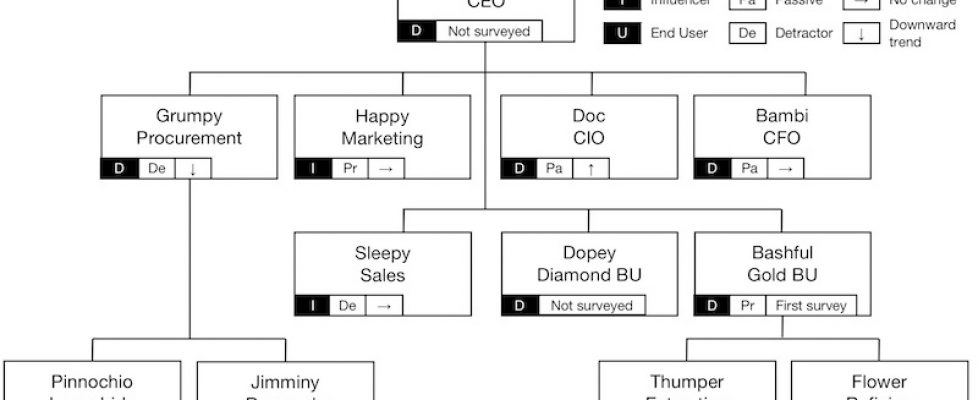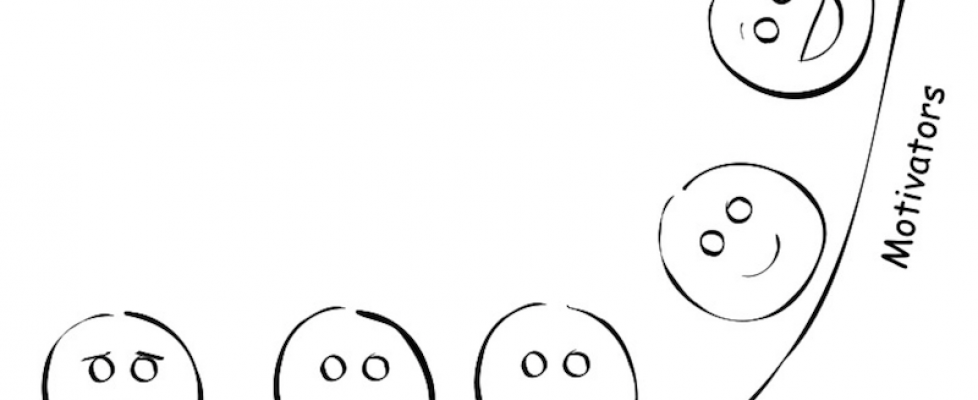Valentine’s Day classic blog – How to stay married – to your customers of course!
It was Valentine’s Day a few years ago, and I was puzzled by the results of some HP customer experience research. The data source and volume were impeccable. However, the results seemed to prove something that differed from everything that I had learned about customer improvement work. Putting the data and the date together caused a flash of inspiration. I discovered something unexpected about how to keep your customers. I used to think it applied only to B2B situations, and now understand that it applies to any business that depends on contracts that need to be renewed annually.
We were trying to determine whether NPS worked for us
We were about a year into the implementation of the Net Promoter System under Meg Whitman’s leadership as CEO of HP. The time had come to work out the relationship between our Net Promoter Scores® relative to our competitors, and our revenue growth or decline. We had eight years of double-blind benchmark NPS® data for HP and about a hundred competitors, and were able to match it against corresponding revenue data for most businesses. We found that NPS was a great leading indicator of revenue. One HP business decided to investigate it in more detail. That business mainly had multi-year service contracts with its customers. The question they wanted to answer was “Which customers actually leave us?” They used their own relationship survey to understand the different behaviors of the NPS Promoters, Passives, and Detractors. What they found surprised us. I believe the findings apply to all businesses that have ongoing contractual relationships with customers.
From surprise to human relationships
Remember Valentine’s Day had come around when I was dealing with the surprise. Here is how I rationalized it in terms of human relationships:

The happy-happy couples
We all know couples who seem to be made for each other. I call them the happy-happy ones. They agree on everything. They have been together for years. We admire and envy them. In Net Promoter System terms, they are the Promoters. They are like the customers for whom everything is going well. All major project milestones are being achieved early. The customers are getting more than the financial benefits they expected. They have been working with the same account team for years. Life is wonderful. The customers talk positively about us to people they know, and bring us new business.

The couples who seem to fight a lot
Most of us also know couples who bicker constantly, needle each other, and occasionally provoke major arguments. In many cases, we are surprised to note that they have been together for years and show no signs of separating. Why? Because they are communicating! They stay together because they have invested a lot in the relationship and changing seems too scary. In Net Promoter System terms they are the Detractors. They escalate to the CEO. They get lots of attention. They get price rebates because they are angry. And, in the words of HP’s former head of Global Account sales (Jan Zadak) “I love escalations! The customers always wind up buying more stuff.”
When there are ongoing service relationships or investments in technology, the cost of change can be high. Imagine you have built all of your business processes around the way that SAP software works, but you now have a dispute with SAP. You will probably try to work it out. One of Meg Whitman’s catchphrases as CEO of HP has been “Run to the fire. Fix it in 24 hours or escalate it in 48.” I suppose it is also a guy thing that comes to the forefront in male-dominated industries. Men want to solve problems, and are willing to devote all their time to fixing a customer escalation, no matter what else is happening in the relationship.

The couples in the deadly zone of mutual indifference
Have you ever been in one of these relationships? I have, in the distant past. You get home. You think to yourself, “She is not saying anything… everything must be fine.” If you had that sort of relationship, how did it work out for you? Communication is the lifeblood of couples and of businesses with contractual relationships. Think of it this way at the very least; if you are not communicating, your competition may well be doing so. In the absence of communication, someone else smiles at your partner or customer and offers them flowers. They leave you, and you are surprised. Why didn’t they complain about something? What happened? In NPS terms, these are the Passives. Across most industries, they are 35 to 40 percent of all your customers.
What did the HP data show?
This particular multi-billion-dollar HP division had about a 15-point NPS decline over three years. Their revenue declined with the expected time lag. However the surprise was where it declined. Revenue with Promoters rose slightly. Revenue with Detractors stayed flat. Revenue with Passives declined close to 20%. Someone else was smiling at our Passives and sending them flowers. For the sake of completeness, I have to add that the particular business has since more than recovered the decline. I believe this data, these conclusions, and this couples metaphor are representative of all businesses that depend on renewable single-year or multi-year contracts. They are not helpful for pure product businesses.
The message
It is simple. Communication matters. Customers want to be remembered. If the only times your customers have contact with you are when you want to sell them something or when something is wrong, they will leave you. This insight could help your personal life too.
Your customer experience listening and improvement system is a crucial part of maintaining ongoing communication with the customers who are not escalating, and who are not active references for you. Just as you would never consider delegating communicating with your partner to someone else, you should manage your listening and improvement process on your own. Don’t delegate it to a third party. That would communicate something you don’t want: “I am too busy to listen to you. Talk to this person instead. That is a good use of your time, but not of mine.”
Piotr Sadowski has posted a Polish version of this article on LinkedIn here. And you can still find a slightly different version of the article in French that I posted a couple of years ago, also on LinkedIn here.
This is an edited version of a chapter in our book Customer Experience Strategy – Design and Implementation, available in paperback and Kindle formats from Amazon stores worldwide.
In the meantime, please feel free to comment below and sign up for our newsletter here to stay up to date. The artwork is by Peter FitzGerald, and you can reach me at mfg@customerstrategy.net.















